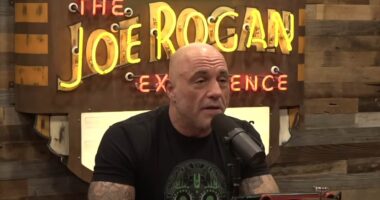Joker: Folie à Deux is currently available for streaming on Max, accessible to all subscribers. Viewers now have the opportunity to enjoy the performances of Joaquin Phoenix and Lady Gaga during the holiday season!
The film Joker: Folie à Deux was helmed by director Todd Phillips, who also collaborated on the screenplay with Scott Silver. Joaquin Phoenix reprises his role as Arthur Fleck, also known as Joker, in this installment where he is accompanied by the character of psychiatric patient Harley Quinn, portrayed by Lady Gaga. Despite the extensive build-up, this sequel to the highly successful 2019 movie Joker left Warner Bros. disappointed. Following critical backlash at the Venice Film Festival debut, the movie grossed $201 million worldwide. While this amount seems substantial, it only marginally exceeded the reported $190 million production cost.
Now that Joker: Folie à Deux is available for streaming on Max, there is potential for a resurgence in interest and viewership. Certain individuals who missed the opportunity to see the movie in theatres may seize the chance to explore the next phase of this popular series. However, fans of the initial film might be let down or puzzled by the conclusion of Joker: Folie à Deux.
Don’t worry, Decider is here to help. Read on for a full analysis of the Joker 2 ending explained, including who stabs the Joker at the end of Joker 2.
We catch up with Arthur Fleck in prison, where he’s awaiting the trial for his crime of killing five people, including murdering talk show host Murray Franklin on live television. Arthur’s lawyer, Maryanne Stewart (Catherine Keener) plans to argue that Arthur’s suffers from dissociative identity disorder (aka multiple personalities), and that the “Joker” identity committed those crimes, not Arthur. She believes he should be in a hospitalized institution, not a prison.
While awaiting his trial, Arthur meets another inmate, Harleen “Lee” Quinzel (Lady Gaga) and feels an instant connection to her. Lee says she is from Arthur’s neighborhood, that she loved the true crime TV movie made about him, and that she admires him. She says her father was abusive, and she was institutionalized after burning down her family’s home. During a movie night, Lee sets fire to the prison, which, to Arthur, feels like a romantic gesture.
After Arthur and Lee are found together in the aftermath of the fire, Arthur is placed in solitary confinement. Lee visits his cell, and tells him she is being released, because they think Arthur is a bad influence. Then she puts Joker make-up on his face, so she can see the “real” Joker, and tells him to stop taking his medication. He tells her he already has. Lee and Arthur have sex, and Lee promises to stand by Arthur during his trial. After, she says, they will run away together.
At his trial, Assistant District Attorney Harvey Dent (Harry Lawtey) leads the case against Arthur, by calling witnesses who dismiss Arthur’s claims of dissociative identity disorder. Arthur is more concerned by the presence of Lee at his trial than anything else. Arthur’s lawyer tells him not to trust Lee, and reveals that Lee is actually a privileged psychology graduate who voluntarily committed herself, and then checked herself out.
Lee admits to Arthur it’s true, she lied, and voluntarily committed herself. She says she just want to meet Arthur, and for him to like her. Then she says she’s pregnant with Arthur’s baby, and has moved into his old apartment, to get ready to build a life with him. Arthur, touched by her devotion, is placated.
In an effort to appease Lee and his other devoted fans, Arthur embraces his Joker persona in court. He fires his lawyer and opts to represent himself, in full Joker makeup. While questioning his former co-worker, Gary Puddles (Leigh Gill), who was nice to Arthurâwhom Arthur spared from killing in the first movieâArthur is moved by Gary’s testimony of how he was traumatized by the Joker’s crimes.
Back in the prison, the guards brutally beat Arthur for badmouthing them on the stand. They then strangle to death Ricky, another inmate and a friend of Arthur’s. Presumably sick of all the violence, when Arthur makes his closing statement, he renounces the Joker persona, confesses to killing his mother (a murder no one knew about), and takes responsibility for his actions. Lee leaves the courtroom in disgust.
As the foreperson reads out Arthur’s “guilty” verdict, a bomb explodes in the courthouse. Arthur wakes up in the rubble, disoriented. A few Joker fans help him escape the scene. While in their car, Arthur realizes they set off the bomb. When he overhears that the Joker fans plan to burn down the city in Joker’s name, he flees the car.
Arthur finds Lee on those infamous Joker stairs. He wants to run away with her, but she rejects him, because he rejected the Joker fantasy. “All we had was the fantasy, and you gave up,” she tells him. “We were never going anywhere.”
She then starts singing and refuses to talk to Arthur, implying that she was only interested in him if he played into her delusions of a reality that doesn’t existâone where the world is a musical. “Folie a deux” means “a shared madness,” and Arthur didn’t want to share in the madness anymore.
When asked why Arthur decided to renounce the Joker person, Joker director Todd Phillips said it’s because Arthur realized that both Lee and his fans only loved the Joker, not Arthur.
“He realized that everything is so corrupt, itâs never going to change, and the only way to fix it is to burn it all down,” director Todd Phillips told Entertainment Weekly. “When those guards kill that kid in the [hospital] he realizes that dressing up in makeup, putting on this thing, itâs not changing anything. In some ways, heâs accepted the fact that heâs always been Arthur Fleck; heâs never been this thing thatâs been put upon him, this idea that Gotham people put on him, that he represents. Heâs an unwitting icon. This thing was placed on him, and he doesnât want to live as a fake anymore â he wants to be who he is.”
So Arthur goes back to prison. He is approached by a young, unnamed inmate who was a Joker fan, and wants to tell Arthur a joke. The inmate tells a joke about a psychopath who comes across a famous clown who he used to admire, and offers to get him “what you fucking deserve.” The inmate then stabs Arthur in the stomach, presumably killing him.
As Arthur bleeds out, he imagines he was just shot by Lee. He hears himself singing about wanting a son to take his place. We then cut back to the prison, where the psychopath inmate carves a smile onto his own face, while Arthur dies. This mirrors Arthur smearing blood on his face in the shape of a smile in the first movie, as while as Heath Ledger’s version of the Joker in The Dark Knight, who had scars on his face in the shape of the smile.
The young inmate who stabbed Arthur at the end of Joker: Folie a Deux is not a character we’ve met in this film universe before. However, it’s certainly implied that the inmate will become the next Joker, and may, in fact, grow up to be Heath Ledger’s version of the Joker in The Dark Knight, given that they have the same scars on their face.
Don’t forget, both Joker and Joker 2 take place in the ’70s, several decades before Bruce Wayne becomes Batman. The Joker: Folie a Deux ending implies that Joaquin Pheonix’s Joker was simply the man who inspired the real Joker to become the deranged criminal of Gotham that we all know.
(function(d, s, id) {
var js, fjs = d.getElementsByTagName(s)[0];
if (d.getElementById(id)) return;
js = d.createElement(s); js.id = id;
js.src = “//connect.facebook.net/en_US/sdk.js#xfbml=1&appId=823934954307605&version=v2.8”;
fjs.parentNode.insertBefore(js, fjs);
}(document, ‘script’, ‘facebook-jssdk’));

















